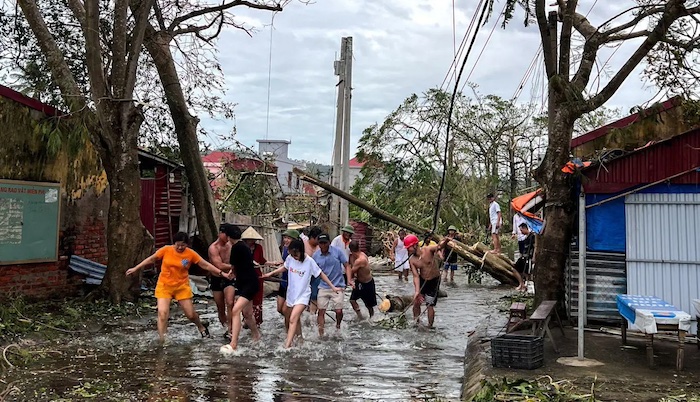The death toll from Typhoon Bualoi and the devastating floods it unleashed across Vietnam has risen to 51, with 14 people still missing and 164 others injured, according to a government disaster management report released Friday.
The powerful storm made landfall on Monday in northern central Vietnam, bringing massive sea swells, destructive winds, and torrential rainfall that crippled communities and infrastructure.
Authorities said the estimated economic losses have surged to 15.9 trillion dong ($603 million), up sharply from the 10.6 trillion dong ($435.8 million) reported a day earlier. Roads, schools, and government offices sustained widespread destruction, while power outages left tens of thousands of families without electricity.
The storm also caused severe damage to livelihoods, inundating or destroying more than 230,000 homes and wiping out nearly 89,000 hectares of rice fields and other crops. While no significant industrial damage has yet been reported, major factories in the affected region include those operated by Foxconn, Formosa Plastics, Luxshare, and automaker Vinfast.
In response to the disaster, the State Bank of Vietnam has instructed lenders to support businesses struggling with the aftermath. Deputy governor Pham Thanh Ha said banks should consider restructuring or freezing loans for companies hit by the typhoon to help stabilise the economy.
Vietnam, a regional manufacturing hub, faces increasing risks from extreme weather events linked to climate change. Typhoon Bualoi is the latest in a string of storms that have battered Southeast Asia this year, raising concerns about resilience in vulnerable communities and critical supply chains.
Melissa Enoch
Follow us on:








